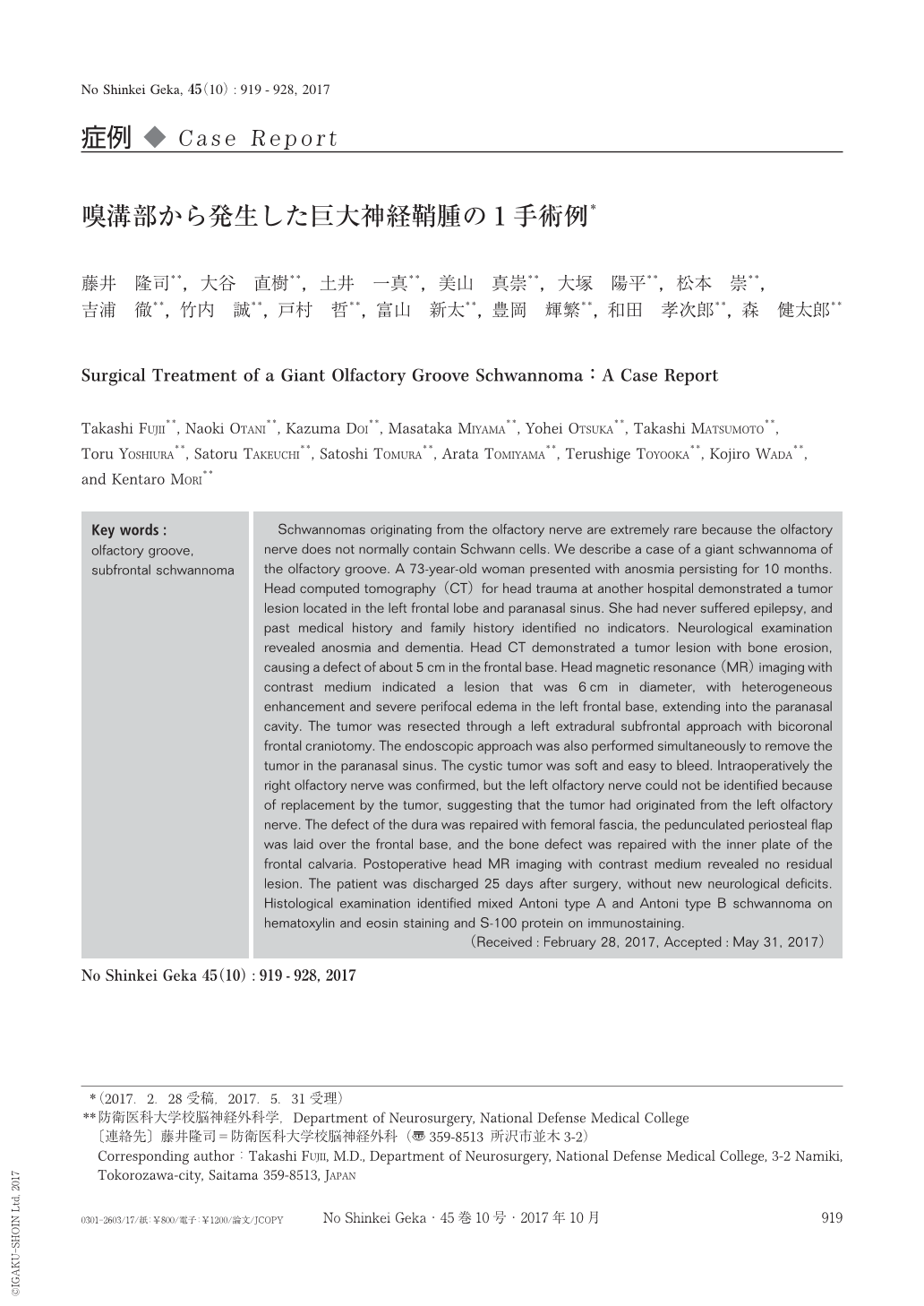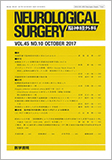Japanese
English
- 有料閲覧
- Abstract 文献概要
- 1ページ目 Look Inside
- 参考文献 Reference
Ⅰ.はじめに
神経鞘腫は末梢神経のSchwann細胞から発生する良性腫瘍で,三叉神経や前庭神経から多く発生することが知られている.一方,嗅神経はSchwann細胞が存在しないため,通常は神経鞘腫が発生しないと言われており,嗅溝部から発生する神経鞘腫は極めて稀である.今回われわれは,嗅溝部から発生した巨大神経鞘腫に対して開頭腫瘍摘出術を施行した1例を経験したので,文献的考察を加えて報告する.
Schwannomas originating from the olfactory nerve are extremely rare because the olfactory nerve does not normally contain Schwann cells. We describe a case of a giant schwannoma of the olfactory groove. A 73-year-old woman presented with anosmia persisting for 10 months. Head computed tomography(CT)for head trauma at another hospital demonstrated a tumor lesion located in the left frontal lobe and paranasal sinus. She had never suffered epilepsy, and past medical history and family history identified no indicators. Neurological examination revealed anosmia and dementia. Head CT demonstrated a tumor lesion with bone erosion, causing a defect of about 5cm in the frontal base. Head magnetic resonance(MR)imaging with contrast medium indicated a lesion that was 6cm in diameter, with heterogeneous enhancement and severe perifocal edema in the left frontal base, extending into the paranasal cavity. The tumor was resected through a left extradural subfrontal approach with bicoronal frontal craniotomy. The endoscopic approach was also performed simultaneously to remove the tumor in the paranasal sinus. The cystic tumor was soft and easy to bleed. Intraoperatively the right olfactory nerve was confirmed, but the left olfactory nerve could not be identified because of replacement by the tumor, suggesting that the tumor had originated from the left olfactory nerve. The defect of the dura was repaired with femoral fascia, the pedunculated periosteal flap was laid over the frontal base, and the bone defect was repaired with the inner plate of the frontal calvaria. Postoperative head MR imaging with contrast medium revealed no residual lesion. The patient was discharged 25 days after surgery, without new neurological deficits. Histological examination identified mixed Antoni type A and Antoni type B schwannoma on hematoxylin and eosin staining and S-100 protein on immunostaining.

Copyright © 2017, Igaku-Shoin Ltd. All rights reserved.


